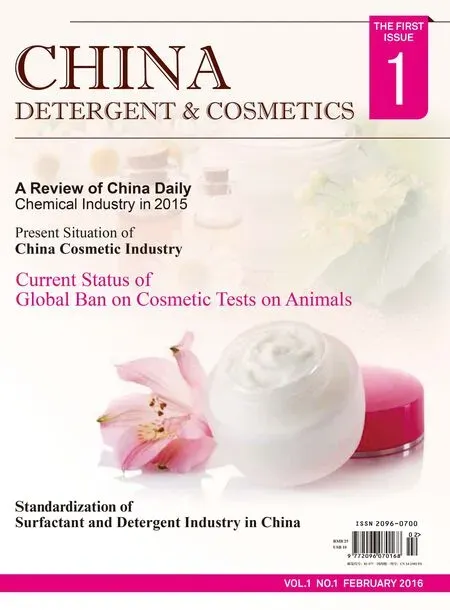CFDA releases final amended version of IECIC
In recent years, CFDA has made a habit of announcing the implementation of new or updated cosmetics regulations each January in its efforts to fall in line with international practices.
As we ushered in 2016, CFDA released the final amended version of the ‘Inventory of Existing Cosmetics Ingredients’ of over 8,000 ingredients following a request for feedback on changes just over a year ago.
The update includes the addition of nine ingredients:
harungana madagascariensis extract
undeceth-3
decyl isostearate
tris(PPG-3 benzyl ether) citrate
chondrus crispus (carrageena)
raspberry ketone glucoside
hesperidinase
PEG-50 hydrogenated palmamide
PEG/PPG-150/30 copolymer
In China, new cosmetic ingredients must be approved by CFDA.
In an effort to regulate and strengthen the supervision and management of cosmetics, CFDA has been revising cosmetic health supervision regulations over the last year.
The revision is to bring the China Administration closer to EU cosmetics regulations, making it easier for foreign companies to understand.
For example, CFDA previously relied on IECIC 2003,an internally circulated list of cosmetics ingredients in determining whether an ingredient is new.
This had proved challenging for the industry due to the limited number of ingredients on IECIC (2003)and the difficulty of getting a new ingredient approved.
To strengthen the safety management of cosmetic ingredients, CFDA published a consolidated Inventory of Existing Cosmetic Ingredients in China (2014) for public consultation.
CFDA was also quick off the mark in January 2014 as it moved to push a final draft to remove animal testing requirements for non-special use cosmetics.
The filing was efficient and highlighted that in comparison to the draft notice, many dates and deadlines have been changed that manufacturers should take note of.
According to CIRS, for many local cosmetic companies that do not have sufficient safety assessment capabilities, this filing means carrying out toxicology tests will be easier to do.
For many foreign cosmetic brands who wish to enter the Chinese market while avoiding animal testing during this approval process, the regulatory body says there may be a way forward for them to achieve both.
The ruling also meant that toxicology test reports will no longer be required if companies have the capabilities to conduct their own safety assessment of ingredients to ensure the safety of their finished cosmetic products.
 China Detergent & Cosmetics2016年1期
China Detergent & Cosmetics2016年1期
- China Detergent & Cosmetics的其它文章
- Application of Sensory Evaluation in the Concealer Product Research
- Formaldehyde Donor Preservatives in Cosmetics
- Investigation of Propoxylation and Ethoxylation of 2-Ethylhexanol in the Presence of an Alkaline and DMC Type Catalyst at Initial Stages of the Syntheses
- Analysis and Suggestions on Patent Application Status for Traditional Chinese Medicine Cosmetics
- Standardization of Surfactant and Detergent Industry in China
- Current Status of Global Ban on Cosmetic Tests on Animals
